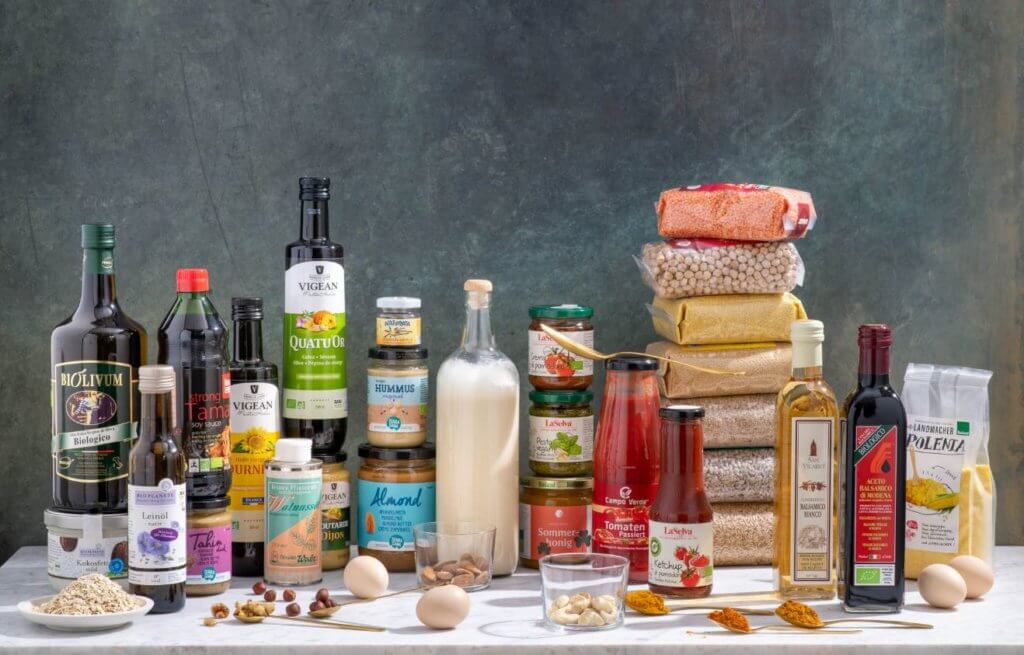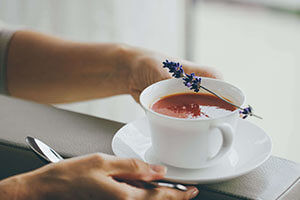What to eat after fasting
During fasting, the body undergoes a major cleanse through autophagy and apoptosis, in which damaged and old cells and cell structures are eliminated or recycled. After fasting, you slowly start eating solid foods again, which marks the start of an intensive phase of cell renewal and cell and organ regeneration. At the same time, fasting revives the gut microbiome, which is so important for our immune system. After fasting, our taste buds are also more sensitive than before, and eating simple, fresh food can trigger an explosion of pleasurable sensations. Now is the ideal time to establish new eating habits. You should use this period of new beginnings to take a critical look at your fridge and your pantry.
Based on nutritional guidelines developed by Buchinger Wilhelmi clinics, we have put together a list of high-quality foods to give you some inspiration. As a simple rule to start with, always buy fresh, unprocessed, organic and seasonal products that are grown locally. Our basic recommendation is: “Eat real food, mainly plant-based and in the right amounts.” This would allow humans to live in harmony with the environment and mean that there would be enough food to feed many more living creatures.
Fruit & vegetables
Seasonal vegetables that can be stored in the fridge:
- Green leafy vegetables (e.g., lettuce, spinach and garden herbs)
- Carrots
- Onions
- Leek
- Kohlrabi
- Peppers
- Cucumbers
Seasonal vegetables that can be stored outside the fridge:
- Apples
- Pears
- Citrus fruits
- Berries and other seasonal fruit
- Tomatoes
Vegetables and fruit should make up a large part of your daily diet as they have a high nutrient density and are low in calories.
Fresh vegetables can be enjoyed raw with a hummus dip as a healthy snack, cooked in soups and hotpots, made into salads, or sautéed and served as a side dish, like in our recipe for chicory with quinoa.
Or why not try our Andalusian ajo blanco with roasted vegetables.
On warm summer days, a fresh raw fruits and vegetables salad makes an ideal lunch or dinner.
Oils and nut paste
Oils (cold-pressed, organic and untreated) and nut paste that can be stored in the fridge:
- Linseed oil
- Walnut oil
- Sunflower seed oil
- Tahini (sesame paste)
- Almond paste
… or, for a change, pumpkin seed oil, hazel nut oil, almond oil, algae oil, coconut oil
Oils that can be stored outside the fridge:
- Olive oil
High-quality oils provide important mono- and polyunsaturated fatty acids, which are indispensable for impervious cell membranes and a strong immune system. You should ban industrially produced, refined oils, frying oil and dripping, margarine and hydronated fats from your fridge for your health’s sake.
Dips, spreads and condiments
Dips, preferably home-made, that can be stored in the fridge:
- Hummus
- Red pesto
- Green pesto
Hummus is an allrounder that supplies plenty of plant protein and good fats. Home-made pesto is a good way to enjoy cheese – in small amounts.
Dips, spreads and condiments that can be stored outside the fridge:
- Tamari (soy sauce)
- Dijon mustard
- Balsamic vinegar, dark and light
- Honey
Dairy products and vegan alternatives
For storing in the fridge:
- Low-fat quark (0.3 % fat)
- Natural yoghurt
- Parmesan and other cheese
- Eggs from happy hens
- Oat drink, unsweetened, and other dairy substitutes made with grain, nuts, almonds and legumes
Small amounts of high-quality (organic) animal products can be enjoyed as a supplement to healthy nutrition, as long as they are well-tolerated. Soy and oat drink and related products are good vegan alternatives to cow’s milk.
Low-fat quark combined with linseed oil and other oils makes an ideal creamy base for dips and spreads. Add fresh fruits and some honey to natural yoghurt as a healthy alternative to conventional, sugary fruit yoghurt. Use low-fat quark and yoghurt to make savoury sauces for delicious vegetable dishes, such as our light summer recipe for vegetable menestra.
A pantry filled with healthy, delicious ingredients
Grains and pulses
- Wholegrain rice
- Quinoa
- Millet
- Couscous
- Polenta
- Oat flakes
- Chickpeas (also in a jar)
- Lentils (red and other varieties)

Wholegrain wheat is preferable as it makes you feel full for longer, is healthier and has more nutrients than shelled grains.
Once a day, we recommend you make your own muesli with 1–2 tbsp. low-fat quark (40 g), 1 tsp. linseed oil (5–10 g), 1 tbsp. freshly and finely ground oats (10 g), grated or diced seasonal fruit (50–100 g), lemon or orange juice, and 1–2 tsp. sunflower seeds or other oily seed or nuts. Find the recipe here for Buchinger Wilhelmi muesli.
Polenta also tastes delicious as a savoury dish, for example in a spinach and polenta gratin.
Tip: cook a larger portion of wholegrain rice, quinoa or millet at the weekend. That way, after a long day at work, you only have to sauté the vegetables, warm up the prepared grains and add a high-quality oil to enjoy a healthy, tasty evening meal.
Pulses are important sources of protein and you should always have some in the cupboard. Dried or in a tin or jar, they have a long shelf life and can be bought well in advance. Red lentils are quick to cook and can be used in soups and hotpots. Chickpeas are ideal in curries and salads.
Nuts and oilseeds
- Almonds
- Cashews
- Sesame seeds
- Sunflower seeds
- Hazelnuts
- Walnuts
- Pistachios
- Linseeds
Nuts and oilseeds are valuable sources of fats and plant protein and good alternatives as a snack.
Tip: Spread nuts and oilseeds over your salad or muesli. They are a good source of energy and taste delicious.
Spices
- Natural vanilla
- Turmeric
- Paprika
- Curry
- Caraway
- Cinnamon
- Cardamom
Add fresh herbs and spices to your dishes to give them a different flavour.
More tips for eating healthily after Buchinger therapeutic fasting
- Give away any chocolate and other candies you have lying around at home (except for dark chocolate with 85% cocoa content). It takes a great deal of self-control to consistently choose the healthy option if a sweet, tempting alternative is within reach.
- Always make sure you have a choice of high-quality snacks or the ingredients for them at home (e.g., vegetable sticks with hummus, natural yoghurt with fruit, or a handful of mixed nuts).
- If you don’t have time to cook during the week, buy fresh vegetables, fruit and grains from the market at the weekend and prepare some healthy dishes in advance to enjoy either in the evenings with the family or to take to the office.
- When you are traveling, it is often hard to find healthy alternatives to fast food. Make yourself a lunch package with a healthy choice of snacks (e.g., vegetable sticks, fresh fruit and homemade sandwiches, mixed nuts).
- Learn to listen to your body’s signals. After fasting, your feeling of satiety is more intense. Don’t overeat, but give your body the nutrients and energy it needs for everyday life.
- Make time for regular digestive rest days, in which you eat, e.g., only steamed vegetables with cold-pressed oil or rice, or just fruit. Intermittent fasting (a 10-16-hour break between meals overnight) is also recommended. It allows you to keep your normal weight and treat your digestive organs and metabolism to a beneficial break.
We would be happy to support you with healthy ingredients for the time after your fast:








